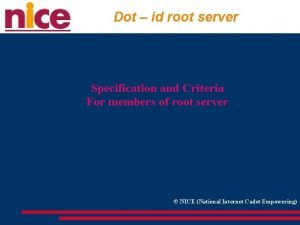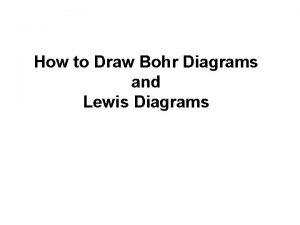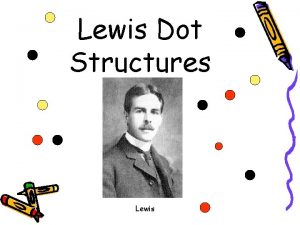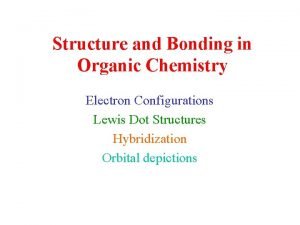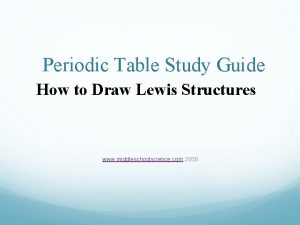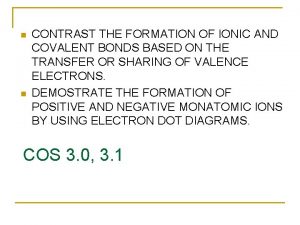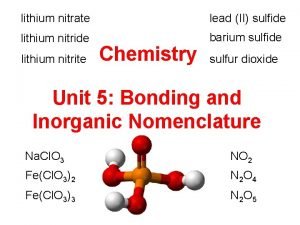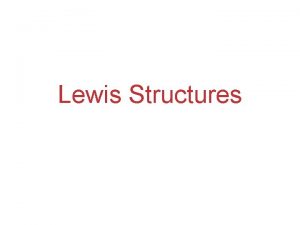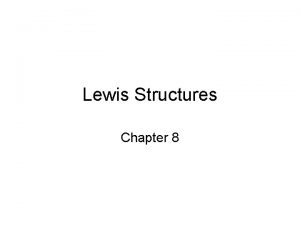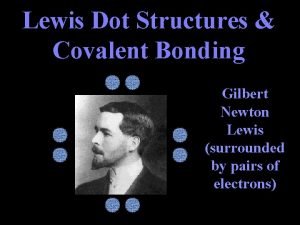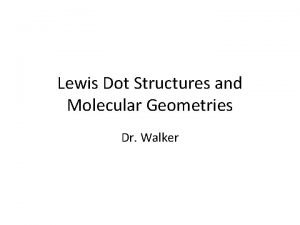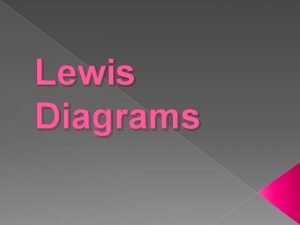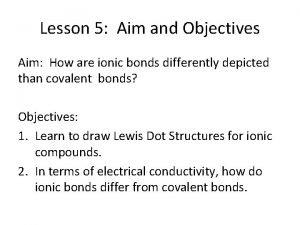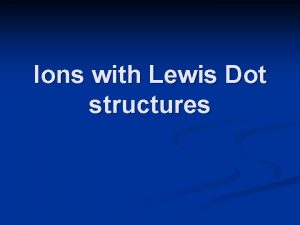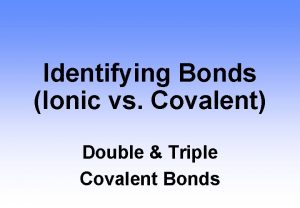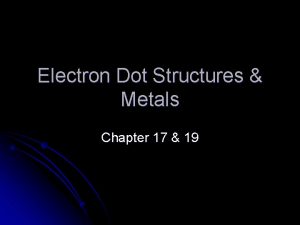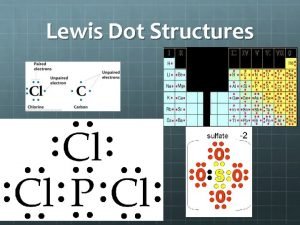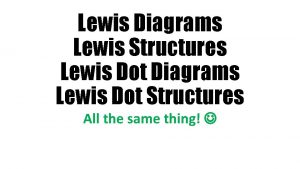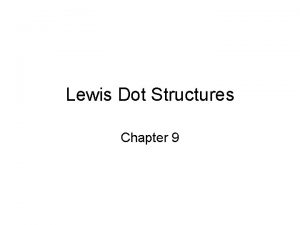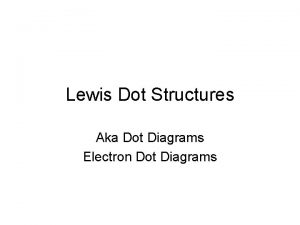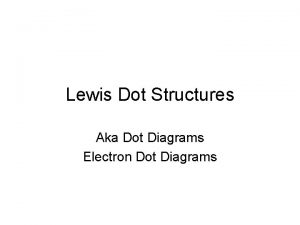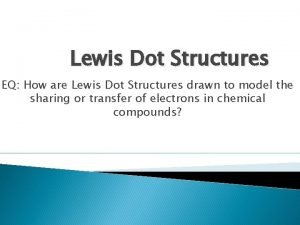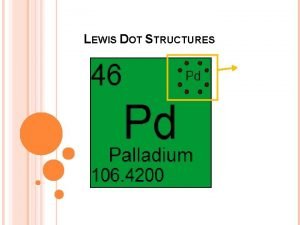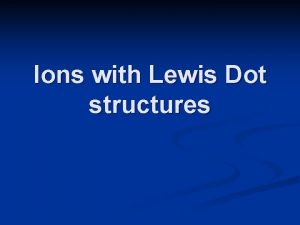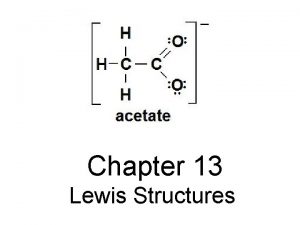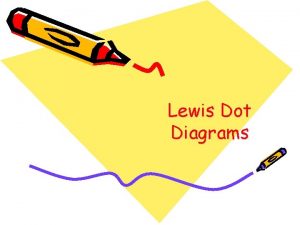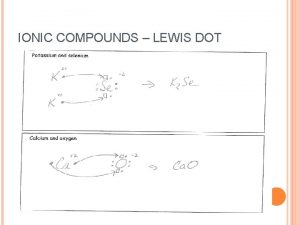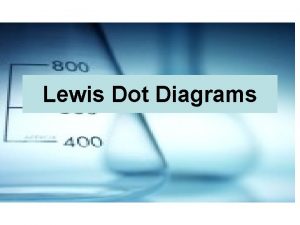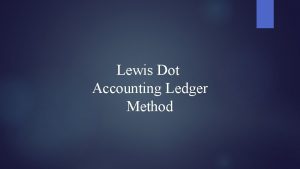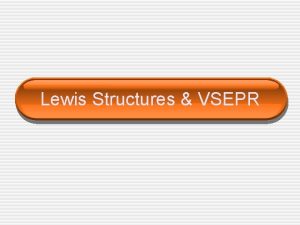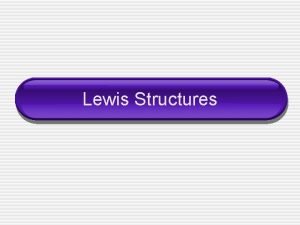Lewis Dot Structures Lewis Dot Structures for Single

























- Slides: 25

Lewis Dot Structures

Lewis Dot Structures for Single Elements Ar S Br Li

Mg C B N O K

Molecules H 2 O

Electronegativity: Important for central atom

CO 2

PF 5 BH 3

CN 1 -

C 2 H 6 C 2 H 3 O 21 -

CCl 4 ICl 3

Be. Cl 2 COH 2

CCl. FBr 2 SH 2

What is VESPR

VSEPR • valence-shell electron-pair repulsion (abbreviated VSEPR and pronounced “VESper”) theory • basic principle is valence electrons around a central atom stay as far apart as possible to minimize the repulsions



Draw the Lewis structure for Br. F 3


Polarity • Polarity is the uneven partial charge distribution between various atoms in a compound. • Atoms, such as nitrogen, oxygen, and halogens, that are more electronegative have a tendency to have partial negative charges. Atoms, such as carbon and hydrogen, have a tendency to be more neutral or have partial positive charges. • Electrons in a polar covalent bond are unequally shared between the two bonded atoms, which results in partial positive and negative charges.

Polarity • Polarity occurs based on the difference in electronegativity between atoms in a molecule having an unequal distribution • Electronegativity is an expression of an atom's tendency to attract electrons in a chemical bond • In order to determine the polarity of a bond, you must find the difference in the electronegativity of the atoms involved • If the difference is between 0. 4 and 1. 7, the bond will be polar

Polarity Polar

Polar or Non-Polar?

Polar or Non-Polar?

Polar or Non-Polar?

Polar or Non-Polar?
 Id root
Id root B-r diagram
B-r diagram Lewis dot diagram
Lewis dot diagram Single instruction stream
Single instruction stream Single instruction single data
Single instruction single data Waiting line management
Waiting line management 1-5 solving inequalities answers
1-5 solving inequalities answers Java vs dot net
Java vs dot net Homologous structures and analogous structures
Homologous structures and analogous structures Octane lewis structure
Octane lewis structure How to draw lewis structures
How to draw lewis structures Lewis dot structure guide
Lewis dot structure guide Lewis structure for formaldehyde
Lewis structure for formaldehyde Lewis dot structure for kf
Lewis dot structure for kf Vsepr model vs lewis structure
Vsepr model vs lewis structure Write the chemical formula for iridium(iii) nitride
Write the chemical formula for iridium(iii) nitride Hcn lewis structure
Hcn lewis structure Ccl2f2 lewis
Ccl2f2 lewis Lewis structure li
Lewis structure li Kf lewis structure
Kf lewis structure Lewis dot structure trigonal pyramidal
Lewis dot structure trigonal pyramidal Ion lewis dot structure
Ion lewis dot structure Lewis dot structure ionic vs covalent
Lewis dot structure ionic vs covalent Nach3coo lewis structure
Nach3coo lewis structure Lewis dot structure ionic vs covalent
Lewis dot structure ionic vs covalent Lewis dot diagram for gold
Lewis dot diagram for gold
